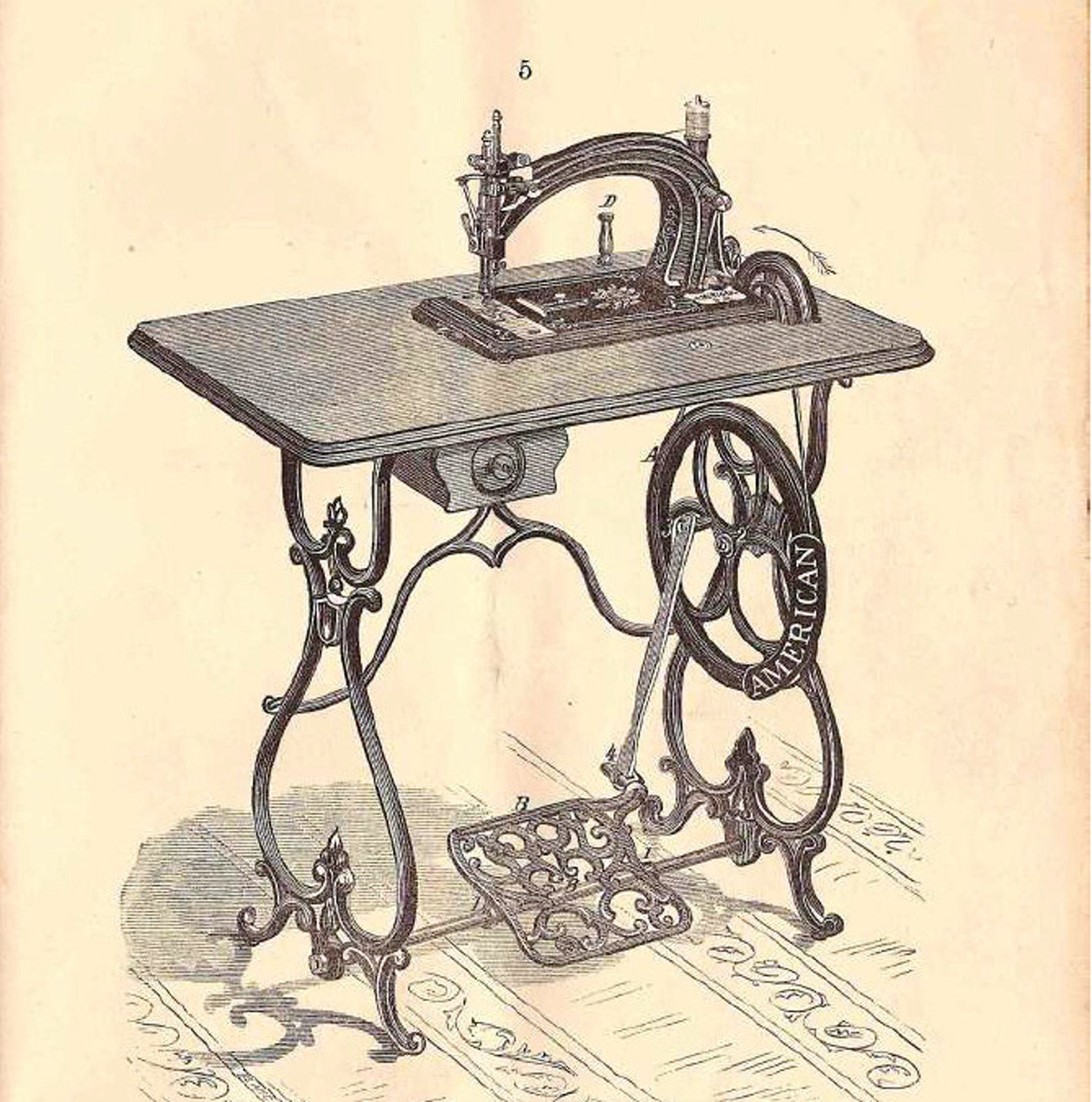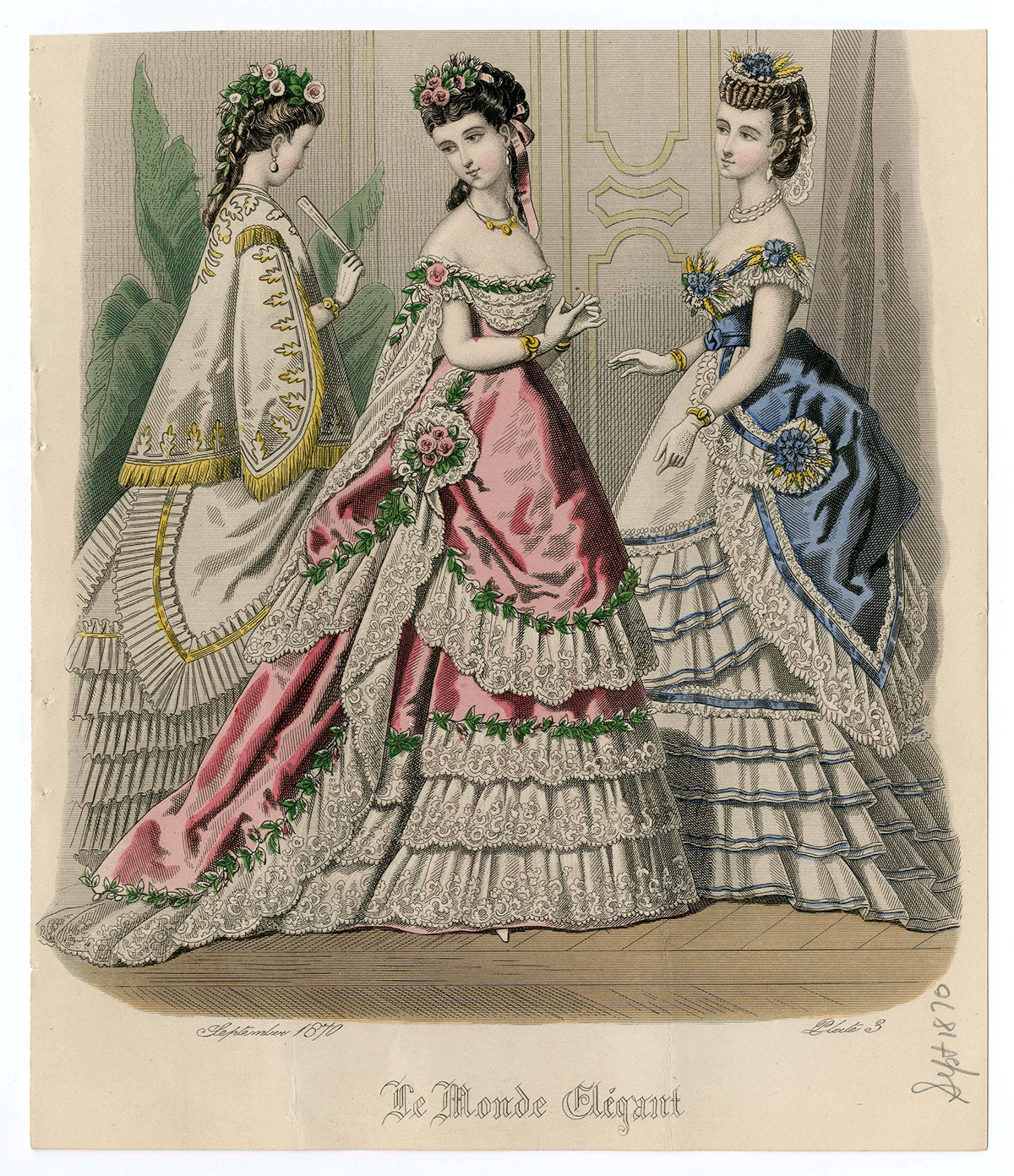Not only were there high expectations of the garments that women wore, but there were high expectations of how women behaved in these garments. These expectations of behavior can be seen in guides for etiquette from the late 1800’s, including in the previously discussed Lady’s Guide to Perfect Gentility published in 1856, and The Lady’s Book of Etiquette and Manual of Politeness, published in 1860. Etiquette guides go into great detail on how a woman is expected to navigate her surroundings while wearing these cumbersome garments.
Stairs
With these garments came limitations in everyday life. This clothing made daily activities difficult “such as climbing stairs or walking in the streets.”1 But there were many more, seemingly simple activities than just climbing stairs or walking in the streets that were difficult. Women struggled with wearing coats, sitting in chairs, and exercising in any capacity. Walking up a set of stairs was not an easy task. A woman wore many layers and in order to not trip she had to lift them up with one hand. With the other hand, she could hold the banister to help steady herself. Her garments required so much attention that both of her hands had to be used and it would be nearly impossible for her to carry anything up the stairs.
1880 Fashion Plate
Walking and Exercise
Walking in the streets is another seemingly simple task that was in fact quite difficult for a woman because of her clothing. The Lady’s Guide to Perfect Gentility carefully laid out how a lady should go about this task of keeping her skirts clean in the dirty streets, while still appearing modest. When walking over pavement and dirt a woman was expected to “gracefully raise her dress a little above her ankle.”2 She was not to raise the dress to far up or it would become inappropriate in revealing lower limbs. However, the height to which she raised her dress is not the only constriction she had. The hand that she used to lift the dress also mattered; “with the right hand, she should hold together the folds of her gown and draw them toward the right side.”3
She was never to raise the dress with both hands unless the mud she was walking through was particularly deep, because using both hands would reveal too much of the woman’s ankles and feet.
At all times she was expected to be elegant and polite. Her skirts made walking into a task filled with tedious etiquette on how she should attempt to keep her skirt clean while still appearing as the perfect woman.
Exercise was difficult if not nearly impossible as well. It was encouraged for women to exercise to keep up a healthy physique, although the exercises that were recommended were simple so as not to strain the woman. There were many forms of exercise that were nearly impossible for a woman to participate in while wearing her everyday clothing, like horse-back riding, or riding a bicycle.
1877 Fashion Plate
Although it still was not easy, walking was the form exercise that was most advised to help woman stay in shape. Walking was the only form of exercise where the woman was not expected to have a new and vastly different outfit from her other everyday clothing. All other forms of exercise required a different costume for, which made these activities even more costly. Her clothing was too cumbersome for many activities that men could easily participate in.
1870 Fashion Plate
Wearing a Coat
The wide skirts specifically made simple tasks more difficult. Wearing a jacket was one task that was made difficult due to her enormous skirts. A woman’s dress skirts were often so large that it would be impossible to wear a coat with sleeves. Instead women wore mantles that were open on the sides and draped over the shoulders.
These mantles would have large undefined arm holes and would only be sewn together for a portion on the sides. This allowed there to be open room for the skirt to spread out and the arm opening allowed space for many different types of sleeves, both tight and flared. The mantle was the only way, besides wearing extra undergarments, that she could dress warm for the colder weather without interrupting the flow of her garments and keeping the expected silhouette.
1870 Fashion Plate
1870 Fashion Plate
Sitting
Sitting was another seemingly simple task that was difficult for women because of their garments. Like wearing a coat, a woman could not sit in a chair with arms because her skirt would not fit in the confined space. So instead her chair would be armless while her husband’s chair would have arms. This armless style allowed room for her skirt to be spread out and make sitting more comfortable. Aspects of her life had to be altered to allow space for the garments and keep her presence perfect.
1 Crane, Diana. "Clothing Behavior as Non-Verbal Resistance: Marginal Women and Alternative Dress in the Nineteenth Century." Fashion Theory 3, no. 2 (1999): 241-68. 242.
2 Thornwell, Emily. The Ladys Guide to Perfect Gentility, in Manners, Dress, and 54 Conversation ... Also a Useful Instructor in Letter Writing ... Etc. New York: Derby & Jackson, 1856. 80.
3 Thornwell, 80.

Display of Wealth

